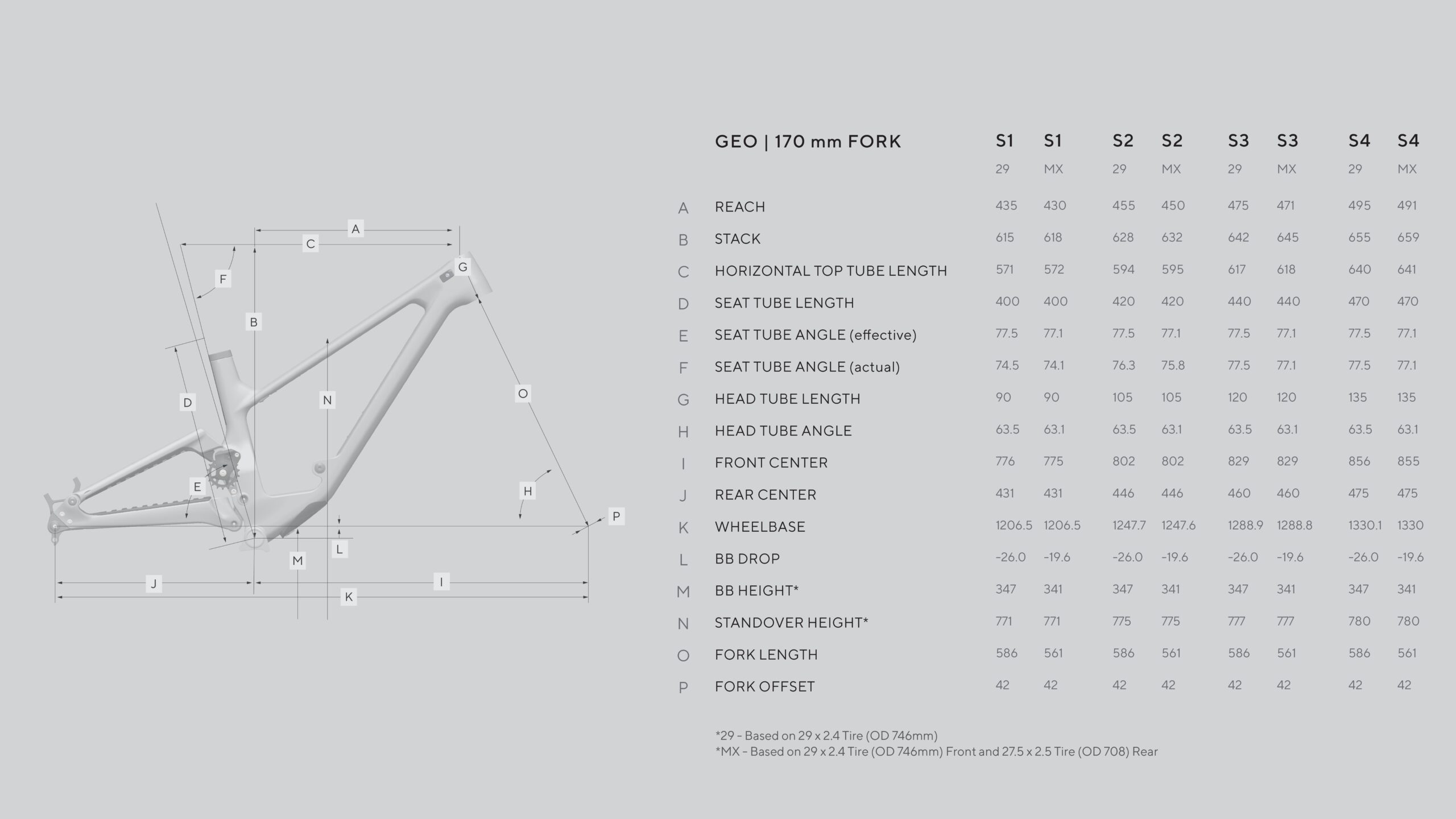Forbidden Dreadnought V2
Wheel Size: 29’’ front / 27.5’’ or 29’’ rear
Travel: 160 mm rear / 170 mm front
Geometry Highlights:
- Sizes offered: S1, S2, S3, S4
- Headtube angle: 63.5° (29er) / 63.1° (MX)
- Reach: 475 mm (size S3 / 29er)
- Chainstay length: 460 mm (Size S3; adjustable +/-10 mm via bolt-on dropouts)
Frame Material: Carbon fiber
Price (see below for full details):
- Frame w/ RockShox Vivid Ultimate: $4,299 USD / $5,499 CAD / €4,399 / £3,899
- Complete bikes from: $6,499 USD / $8,499 CAD / €7,899 / £6,599
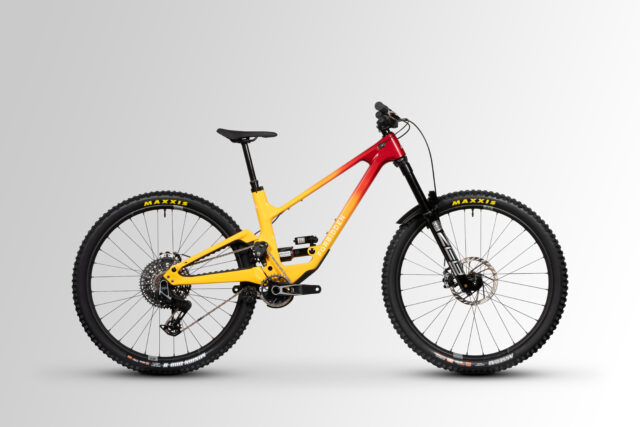
Intro
Between their Druid V2 Trail bike that launched last year and new Supernought DH bike, it’s no surprise that Forbidden has been working on a new version of their Dreadnought Enduro bike to slot between them.
Now, the Dreadnought V2 is here — and it’s maybe even more radical than we might have guessed.
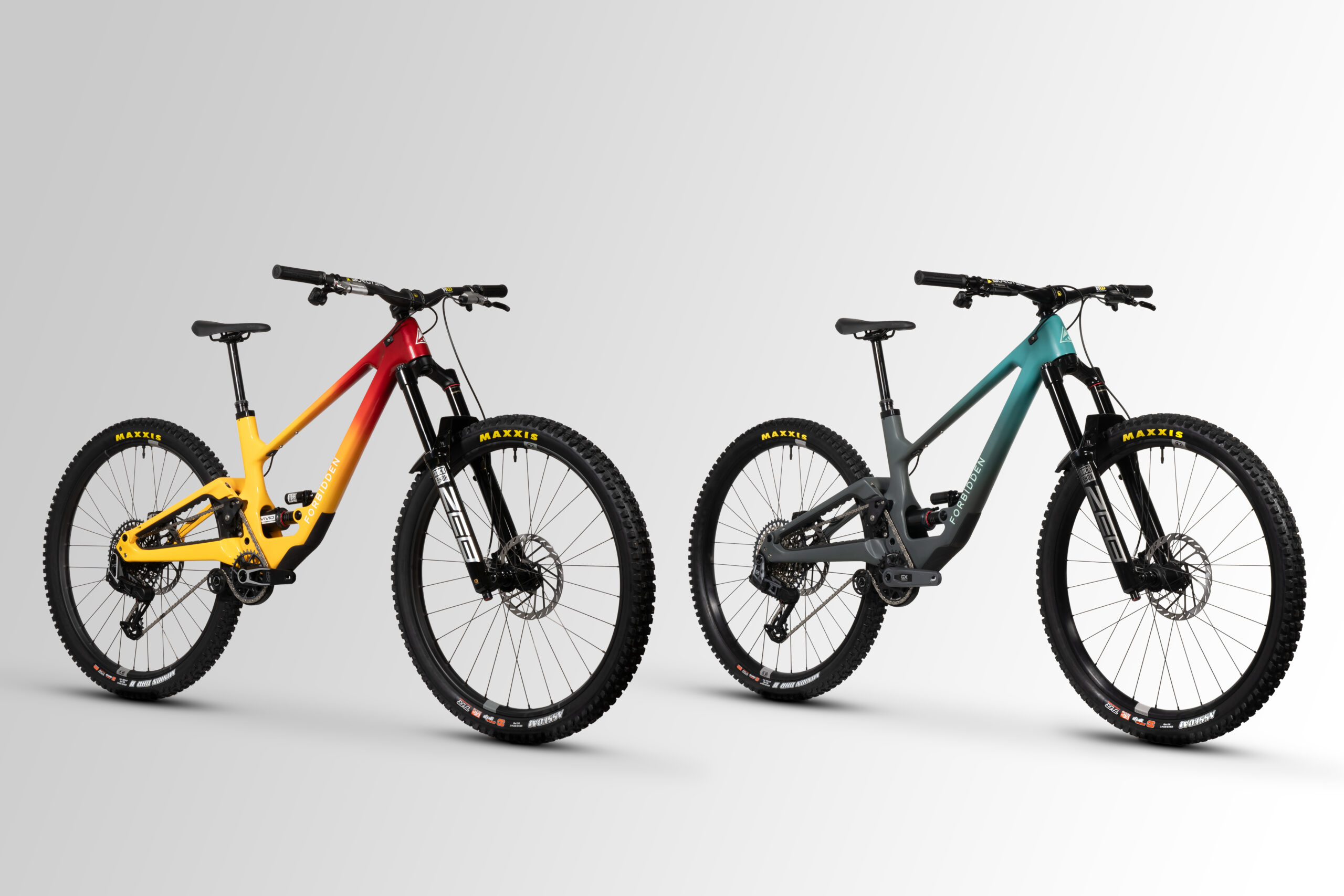
The Frame
Forbidden’s commitment to high-pivot suspension unsurprisingly carries over to the new Dreadnought, but the V2 bike gets their “Trifecta V2” version of the layout — a high-virtual-pivot arrangement instead of the linkage-driven single pivot used on the V1 bike. The rear suspension travel has also been bumped up a touch to 160 mm (still delivered by a 205 x 65 mm Trunnion mount shock). Moving away from the single-pivot layout let Forbidden reduce the anti-rise of the V2 Dreadnought substantially deeper in the bike’s travel, though it’s still fairly high overall — starting at about 135% and falling off to around 40% by bottom-out. (The V1 Dreadnought started a few percentage points lower, but only fell off to about 110% by the end of travel.)
Forbidden founder and engineer Owen Pemberton goes into his philosophy on suspension design in much more detail in Episode 201 of Bikes & Big Ideas, but his take is that relatively high anti-rise helps keep the chassis flatter and more stable under braking, rather than pitching forward.
The Dreadnought V2’s leverage curve hasn’t changed as much. It’s still quite progressive overall, going from a little over 3:1 to about 2.25:1 in a mostly straight-ish line; as with the V1 bike, the V2 gets a little more progressive deep in its travel, but that effect has been moderated a bit on the V2. The axle path has also been made a touch less rearward, hitting ~26 mm of rearward travel at about 130 mm of travel before coming back forward slightly in the last 30 mm. The Dreadnought V2’s anti-squat is also quite high, starting a little over 150% and falling off to about 85% at bottom out (in a 32/51 gear combo; COG height isn’t stated).



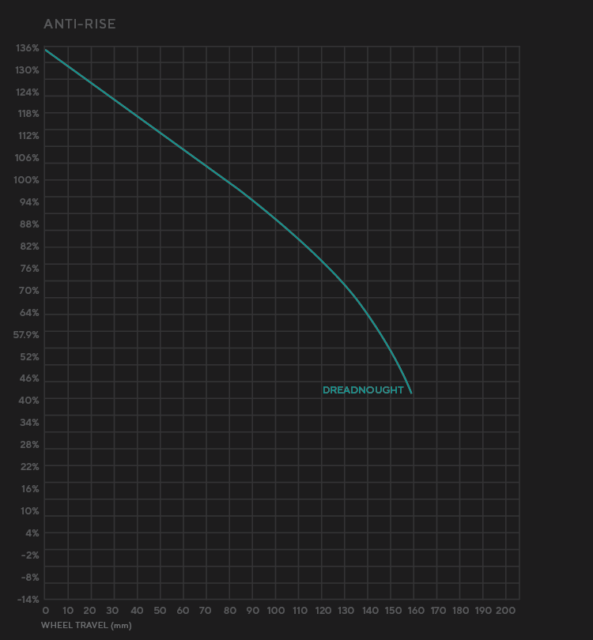
That’s all broadly similar to the Supernought DH bike that Forbidden launched late last year (and that Brook Macdonald is now piloting). The Supernought’s anti-squat and anti-rise fall off a bit more sharply deep in its travel, and its leverage curve is a touch more progressive overall, but the overall design philosophy is quite similar between the two.
The Dreadnought frame is, unsurprisingly for the brand, offered in carbon fiber only, and it gets internal cable routing, a threaded bottom bracket shell with lower chainguide tabs, and bolt-on dropouts to toggle between a 27.5’’ or 29’’ rear wheel. The brake mount is for a 200 mm rotor, and there’s room for a water bottle inside the front triangle across the entire size range, plus an accessory mount underneath the top tube.
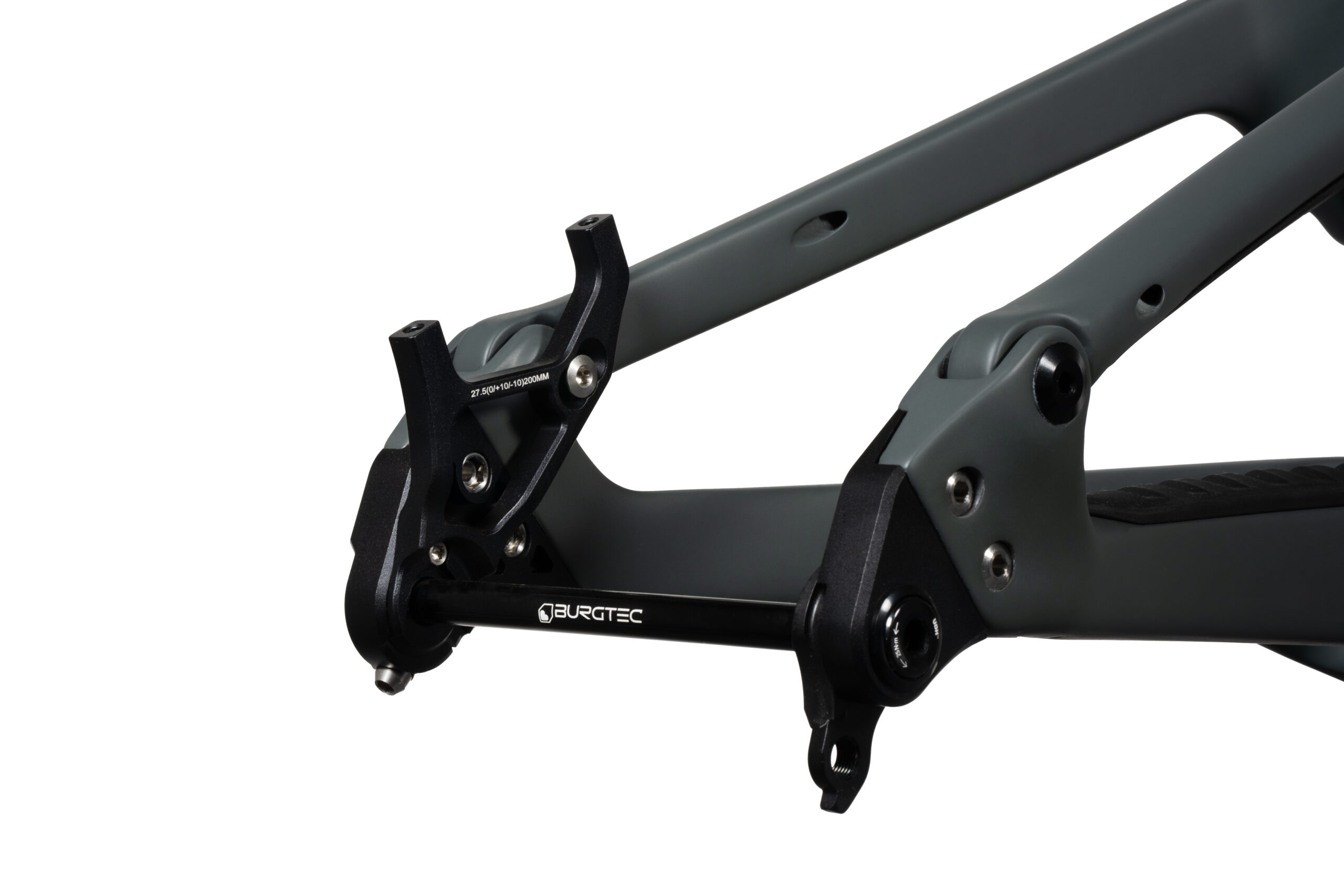
Fit & Geometry
The Dreadnought’s geometry is pretty similar to that of the Supernought, too. The Dreadnought V2 is offered in the same four sizes (S1 through S4), with reach starting at 435 mm for the S1 and growing in 20 mm steps up to 495 mm on the S4. All four sizes get a 63.5° headtube angle, a 77.5° effective seat tube angle (actual angles get substantially steeper in the larger sizes), and a 26 mm bottom bracket drop. Those numbers are all in the 29er configuration; going to the MX wheel configuration slackens the headtube to 63.1°, lops four or five millimeters off the reach figure, and lowers the bottom bracket by 6 mm (to a stated height of 341 mm).
And then there’s the chainstay length. As per usual for Forbidden, the Dreadnought gets size-specific chainstays with much, much bigger steps between sizes than most other companies. The S1 starts at a pretty short 431 mm, but the chainstays grow by about 15 mm per size, up to a colossal 475 mm on the S4.
Forbidden’s argument is that doing such big steps gives them an equal ratio of rear-center to wheelbase across the size range. The math checks out, but it’s notable that most companies aren’t making nearly as big swings in chainstay length, even as size-specific stays become much more common than they were not too long ago. But if you want to tinker, Forbidden also offers +/- 10 mm dropouts for the MX configuration or +10 mm ones for the 29er.
The Builds
Forbidden offers the new Dreadnought in three different build kits, all of which get full SRAM / RockShox drivetrain, brakes, and suspension packages. The highlights are as follows:
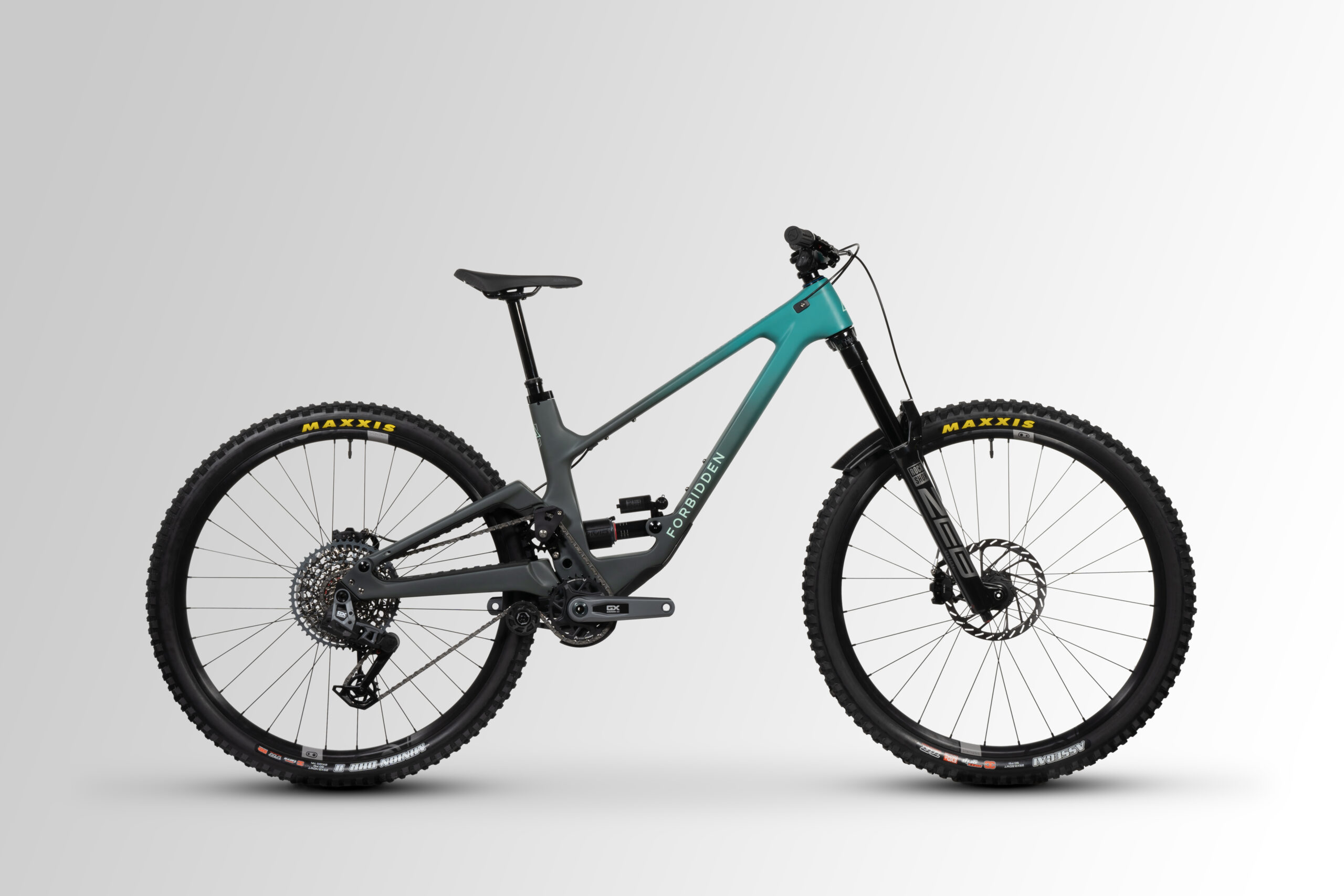
- Drivetrain: SRAM GX Transmission
- Brakes: SRAM Maven Bronze (w/ 200 mm Centerline rotors)
- Fork: Rockshox Zeb Select (170 mm)
- Shock: RockShox Vivid Select
- Wheels: Crank Brothers Synthesis Aluminum Enduro
- Dropper Post: OneUp
- Drivetrain: SRAM GX Transmission
- Brakes: SRAM Maven Silver (w/ 200 mm HS2 rotors)
- Fork: Rockshox Zeb Select+ (170 mm)
- Shock: RockShox Vivid Select+
- Wheels: Crank Brothers Synthesis Aluminum Enduro
- Dropper Post: OneUp
- Drivetrain: SRAM X0 Transmission
- Brakes: SRAM Maven Ultimate (w/ 200 mm HS2 rotors)
- Fork: Rockshox Zeb Ultimate (170 mm)
- Shock: RockShox Vivid Ultimate
- Wheels: Crank Brothers Synthesis Carbon Enduro
- Dropper Post: OneUp
Some Questions / Things We’re Curious About
(1) The V1 Dreadnought was remarkably good at carrying speed through rough terrain for a ~150mm-travel bike, but it had some handling quirks, especially under heavy braking. The revised suspension kinematics (particularly the reduced anti-rise) on the V2 look like they might well change that, but how does it all come together on the trail?
(2) What about the chainstay length? The V1 Dreadnought’s stays were already very long in the larger sizes, and they’ve gotten even longer on the V2 (though the axle path is less rearward). What kind of body positioning does the new Dreadnought encourage (Forbidden says pretty centered, which makes sense) and how much of an adjustment period does it take to get used to it?
(3) How does the new Dreadnought stack up against the ever-growing class of high-pivot Enduro bikes in general?
Bottom Line (For Now)
We’d been expecting a Dreadnought V2 for a while now (and Forbidden founder, Owen Pemberton, teased it in Ep.201 of Bikes & Big Ideas back in December). But what they’ve come up with is pretty interesting — especially on the geometry front. We’re very curious to see how the new Dreadnought rides, and are working on getting one in for review. Stay tuned for much more to come if and when we’re able to make it happen.

